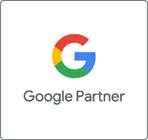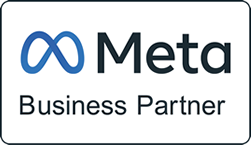As the search company’s ambitions expanded, so did its use of creative brand advertising to help it achieve its empire-building goals.
It all started when hell froze over at the 2010 Super Bowl.
It was just the frigid situation that Google founders had said would have to happen if they’d ever spend money on a TV ad. Then-CEO Eric Schmidt had even called the big game the “last bastion of unaccountable spending in corporate America.”
Yet, here they were.
The commercial itself was called “Parisian Love,” and true to Google’s original intentions, it was not created with such crass commercial intentions. In a blog post on Super Bowl Sunday 2010, Schmidt wrote, “We didn’t set out to do a Super Bowl ad, or even a TV ad for search. Our goal was simply to create a series of short online videos about our products and our users, and how they interact. But we liked this video so much, and it’s had such a positive reaction on YouTube, that we decided to share it with a wider audience.”
Google had long been the digital advertising platform of choice for everyone from the Fortune 500 to your local barber, but it was this spot a decade ago that signaled the company’s shift to creative advertising to sell itself. As a first-ever TV ad, it was flawless. A love story told with just a search bar. Product demo as dramatic narrative device. And it was a hit, becoming one of the most memorable ads of that year.
Since then, Google has become one of the world’s biggest and best creative marketers, even winning Cannes Lions Marketer of the Year honors in 2018. This shift was a necessity over the past decade, as its product offerings expanded far beyond search into hardware like mobile phones and smart speakers, where Google was an underdog. It’s also become more important as brand marketing as the overall scrutiny of Big Tech has intensified. It’s likely a major reason why Google has escaped the same kind of brand black eyes that have tarnished Facebook, despite the company having plenty of its own issues when it comes to not just personal privacy but also toxic content, like YouTube being manipulated by pedophiles. The company, like most major corporations, balances its darker practices or policies with a more family-friendly outward facing image. In Google’s case, it’s used these past 10 years to master the art of selling us a humane tech utopia.
ITS OWN UNORTHODOX IN-HOUSE AD SHOP
“Parisian Love” wasn’t created by a hotshot ad agency but instead by a handful of students dubbed the Google 5,” working within Google Creative Lab, which had launched in 2009 to find a bridge between technology and traditional creative expression. Their brief, according to Lab executive creative director Robert Wong, was to remind people what they love about Google search and highlight some features they might not know about.
A year later, to promote the company’s Chrome browser, Google Creative Lab worked with agency BBH to expand on the emo-product demo genre with “Dear Sophie,” in which a new dad uses all of Google’s tools to create a digital scrapbook chronicling his daughter’s life and his messages to her.
The 2011 ad won Google ad industry accolades and further established the brand as an emerging creative power. Chief marketing officer Lorraine Twohill, who joined Google in 2009, told me in 2018 that this ad was a significant turning point. “In the early days, we had a Chrome digital-only campaign, which was about three things: safety, simplicity, and speed. Very rational,” Twohill said. “That did get us so far, but no one gets out of bed in the morning and says, ‘I need a new browser.’ What changed the game for us was to go out and create ‘The web is what you make of it,’ which is essentially a brand campaign about people using the web to make their lives better, with stories like ‘Dear Sophie.’ It’s as big a milestone as ‘Parisian Love,’ at least internally. It really paved the way for us to do more of that kind of work.”
THE ULTIMATE UTILITY GOES GLOBAL—AND TEARJERKER
In 2013, the company mined its products’ many uses for incredibly emotional stories. Two of the most popular centered around India, a country in which the company just happened to be aggressively building its user base. In October of that year, we heard how Australia-raised Indian orphan Saroo Brierley found his birth family using Google Maps. His memoir of the experience eventually became the critically acclaimed film Lion, which nabbed star Dev Patel an Oscar nomination.
A month later, Google India posted “Reunion,” telling a heart-warming story of two best friends out of the horrors of partition.
THE GOOGLE YOU LOVE, IN A NEW FORMAT
A sure sign of creative ambition is branching out to commercial work to projects that aren’t immediately identifiable as ads but are still unmistakably marketing opportunities. The most ambitious—and still one of the best-ever examples of branded content—is probably when Google Creative Lab’s Aaron Koblin, now cofounder and president of VR/AR company Within, worked with Arcade Fire to create an interactive music video for Chrome. It won a 2014 Emmy for Interactive Media.
To launch the new Pixel phone in 2016, agency Droga5 tried to leverage all the goodwill that Google had built up over the years. Executive creative director Kevin Brady told me that given how competitive the phone market was, Google was its own best differentiator. “Our biggest creative challenge was to introduce people to the Google they know and love in a new format, a phone,” Brady said. “And around the globe, the most recognized connection to Google is the search bar. Sure, they have done so many other amazing things, but this one shape is the clearest and simplest symbol of all the smarts of Google. Once we realized that, and of course noticed that the shape of our phone was also a rectangle, but a very different shape, we had our campaign. It was building on a truly ownable and iconic equity that everyone could relate to and understand.”
This vibe continued a year later with the Pixel 2 spot “Ask More,” which was essentially the brand anticipating all the questions we’d have about the new phone.
THE INEVITABLE TURN TO CELEBRITY MARKETING
Rounding out the decade, Google has wandered away from the everyday user, joining its rivals Apple and Amazon in recruiting celebrity talent to be just like the rest of us with technology.
This began in earnest in 2014 when the brand enlisted FKA Twigs to promote Google Glass. However cool she made the early augmented reality wearables seem, she alone couldn’t save them.
Last Christmas, the company imagined a present-day Home Alone, complete with the real Kevin McCallister. In May, Awkwafina and 2 Chainz complained about the limitations of other devices at a nail salon.
Although these spots are undeniably conventional—albeit grand in their own way—Google hasn’t wholly abandoned its tech-tinkering roots. Look no further than its recent partnership with Domino’s that delivered Cyber Monday Pixel 4 orders with pizza.
MEANWHILE, ON A PARALLEL TRACK, THE MOST AMBITIOUS AND EXPENSIVE MARKETING CAMPAIGN IN HISTORY
That first Super Bowl ad, “Parisian Love,” aired on February 7, 2010. Three days later, the company announced Google Fiber, which would build gigabit internet in municipalities. It would be a harbinger of perhaps the most surprising attempt at R&D as marketing since the heyday of company pavilions at the World’s Fair.
Years before Amazon and its protracted (and seemingly cynical) search for a second headquarters, Google had a legitimate phenomenon on its hands, with consumers begging for the possibility of Google bringing ultrafast internet to their hometowns. In fewer than two months, 194,000 people wrote Google on behalf of their cities and 1,100 localities applied.
When Kansas City got the nod for the first installation, it genuinely transformed the city, at least for a time.
Soon after, people would learn that Google had its own R&D lab, mysteriously dubbed Google X (and later just X), and as word of the wild projects being tried within dribbled into the public—self-driving cars! hoverboards! space elevators! internet balloons!—they served to burnish Google in a way that no 30-second spot or branded campaign ever could. This was the place where the future was being created. This was the Bell Labs of the 21st century.
The company embraced and co-opted the word “moonshot” to signify its ambitions, and it worked. Although the disparate projects that burbled out of the X lab were genuine in their intent, they undeniably served this double purpose for Google. They were great marketing, particularly in the fight for talent in Silicon Valley, and for the public they helped blunt any bad news about Google that came to light, from NSA whistleblower Edward Snowden’s revelations to Google Photos algorithms’ racist labeling pictures of black people.
The company spent $4.4 billion on these “Other Bets” in 2016, which was less than 10% of its total operating costs—in other words, not too bad as marketing budgets go, though pressure from investors as well as internal concerns about this kind of spending on long-term projects ultimately started to rein this in. When cofounders Larry Page and Sergey Brin decided to step away from any operational role in December 2019, it seemed to symbolize an end to this era of moonshot marketing.
But the halo from this decade of investments is likely to shine for a long time to come.
BUILDING A BRAND FOR THE CHALLENGES OF THE DECADE AHEAD
Google’s met its biggest challenges over the last decade with marketing that managed to entertain, inspire, and yeah, sell a lot of products and add a lot of users.
The company’s going to need every ounce of skill its built over that time to face perhaps the most significant challenge of the next decade. Thanks to the proliferation of smart devices, such as AI-enabled virtual assistants like Google Assistant, this next decade isn’t about convincing people to buy its products over a competitor’s but rather assuring them that these very products aren’t a security threat, an existential one—or both.
Google’s 2019 Super Bowl ad hinted at that, framing the always-on assistant as a bridge between cultures. One hundred billion words is a lot of listening.
Beyond selling a product, Google’s marketing is now selling a version of society that more and more people are wary of buying into.
It’s going to take a lot more than a twee version of “Country Roads” to win them over.










